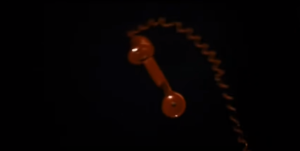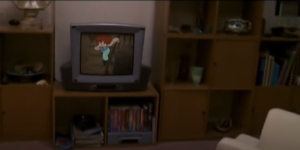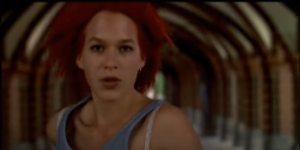Author: gkipp23
30 Second Day
Autumn Mists Analysis Blog Post
Autumn Mists is a succinct capsule of what good cutting can evoke. The film is impressionist, poetic and plotless, but it manages specific narrative through its editing. Kirsanoff says his intention with the short was to imply “nature losing its density and unity,” but we also see this refracted in the emotional state of the central woman.
The most obvious use of editing is that of the reaction shot- images are given drastically new context when intercut with this bleary-eyed, yet stoic, woman. A letter goes up in flames and smoke, filtering out the chimney above: What does this set of shots say? What does it mean, beyond object information? But now every cut is interrupted by this woman, and our unconscious rushes to fill the gaps. Has she written this letter? Has she received it? What does the burning of this letter represent to her? Who is it from? We may not know, but it evokes a feeling in us- We empathize with her grief, with the longing and forlorn expression she wears as she watches the flames consume it. Layer onto this the shots of nature, of the storm battering the puddle and the gauzy lens transitions. By adding a variety of shots Kirsanoff redefines the emotional context of what he is showing us.
Another notable feat of editing is near the very end, where the woman walks along and we match cut with the leaf being swept up in the current of the river. She follows along with it, investigates its origin, and finally her shadow blends with that of the countless tree trunks. Intercutting the human and the natural in matched compositions is that specific artistic editing choice that elevates the film into something this meaningful.
Run Lola Run Blog Post
Run Lola Run retains narrative momentum by both establishing its metaphysical defiance early and by using an array of compositions, camera movements, and types of cuts to weave its images into continuity. Most obvious is the use of the “red phone” image, which slams itself down upon reset of each timeline.

It also repeats an animation and the event of Lola scrambling down the apartment hallway at the beginning. It is not enough to merely repeat the events, however- the composition and camera movements are meticulously imitated, invoking that sense of Deja-vu as the timelines reset and converge. The camera diverges from Lola at the end of the hall, sweeping into a new room where an elderly woman speaking on the phone becomes our new subject. In one timeline, we glide right past her and into the television; As the narrative becomes more frantic, the camera spins erratically before entering the television. As we become more entrenched in the repeated rules and cinematic gestures of the timeline, the film becomes more comfortable breaking them.

One of the more fascinating edits in the movie sees Lola sprinting, the frame interrupted by pillars splitting the image, and occasionally we intercut for a fractional second and see Lola’s face as she runs. A cut is a way to conceal many things, but in this case it is a dilation of time- Run Lola Run frequently manipulate geography with cutting, but these cuts also switch the shots from wide to close, allowing a greater emotional insight and distressing tone.

Run Lola Run is a dense example of the way cutting, composition, images, and editing can allow an audience to understand the spatial and temporal manipulation of a story.
Intro
Hi class 🙂 my name is Gunner. I love movies and filmmaking, some recent favorites have been Beau Travail and Ritual (2000). I don’t make much outside of class but am excited for the semester!